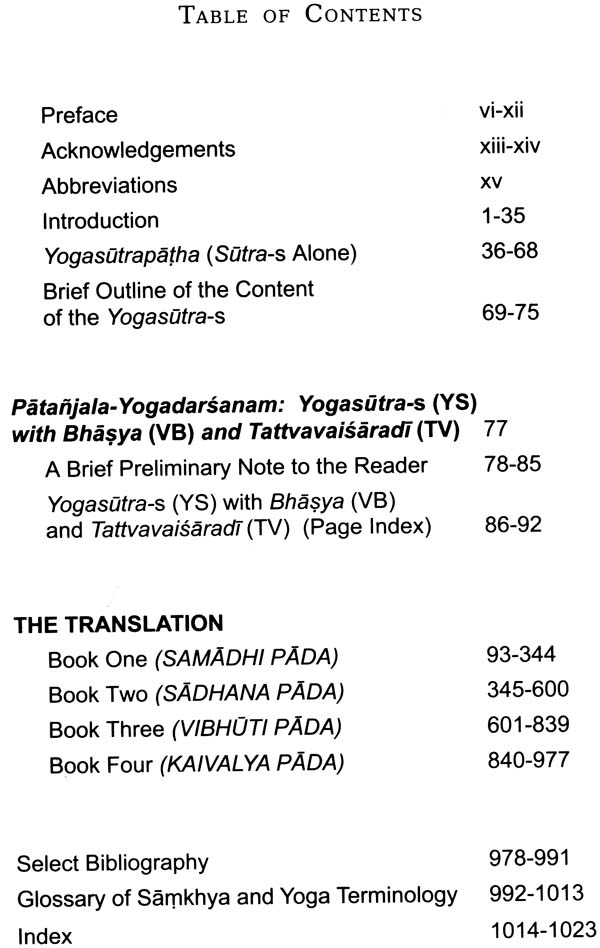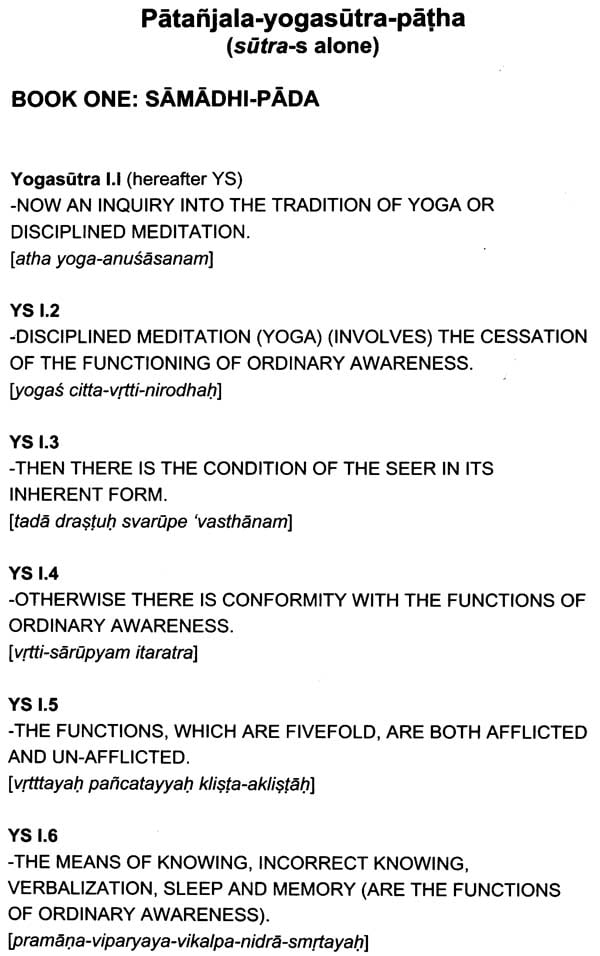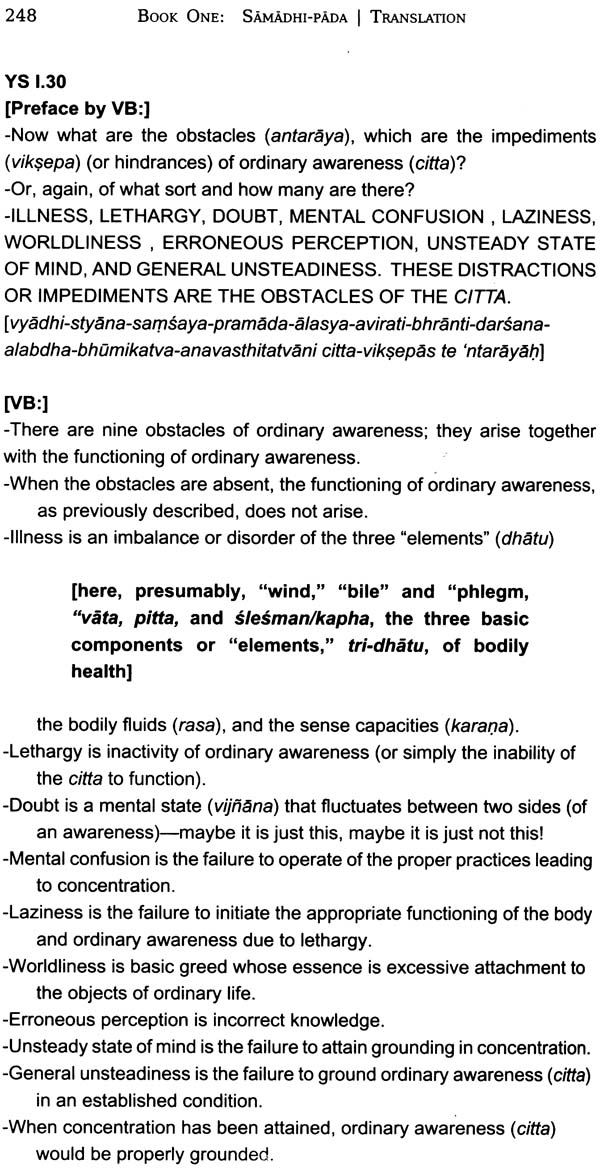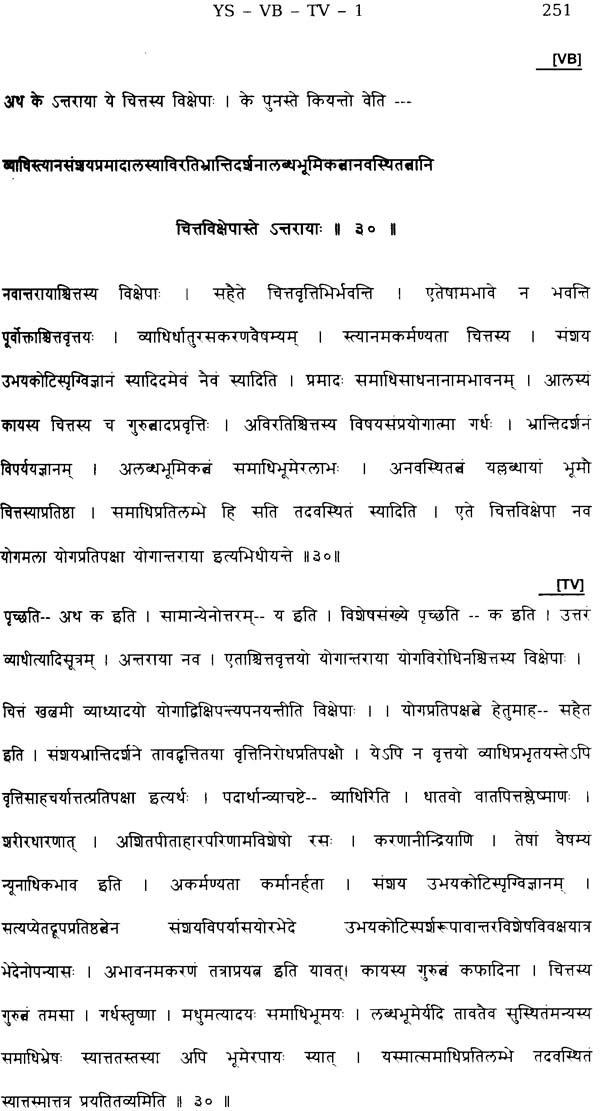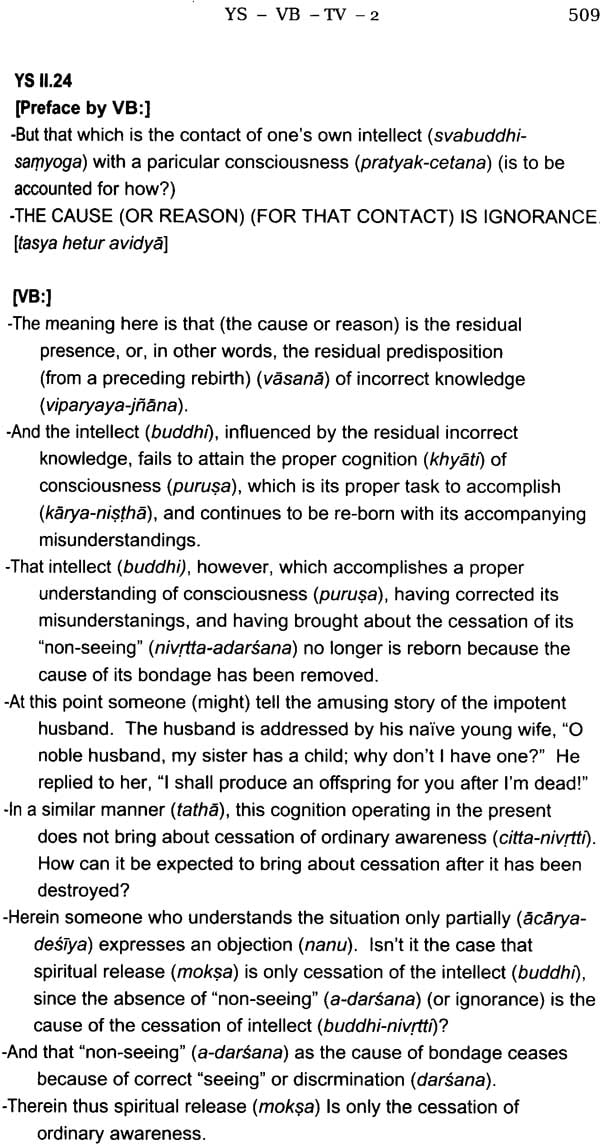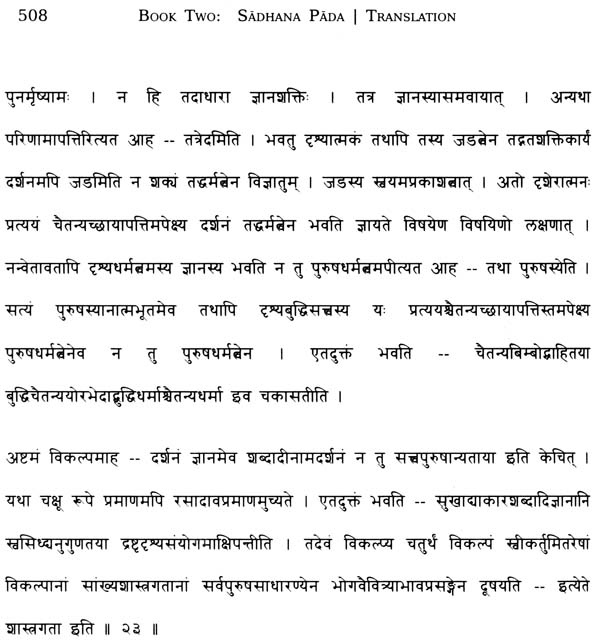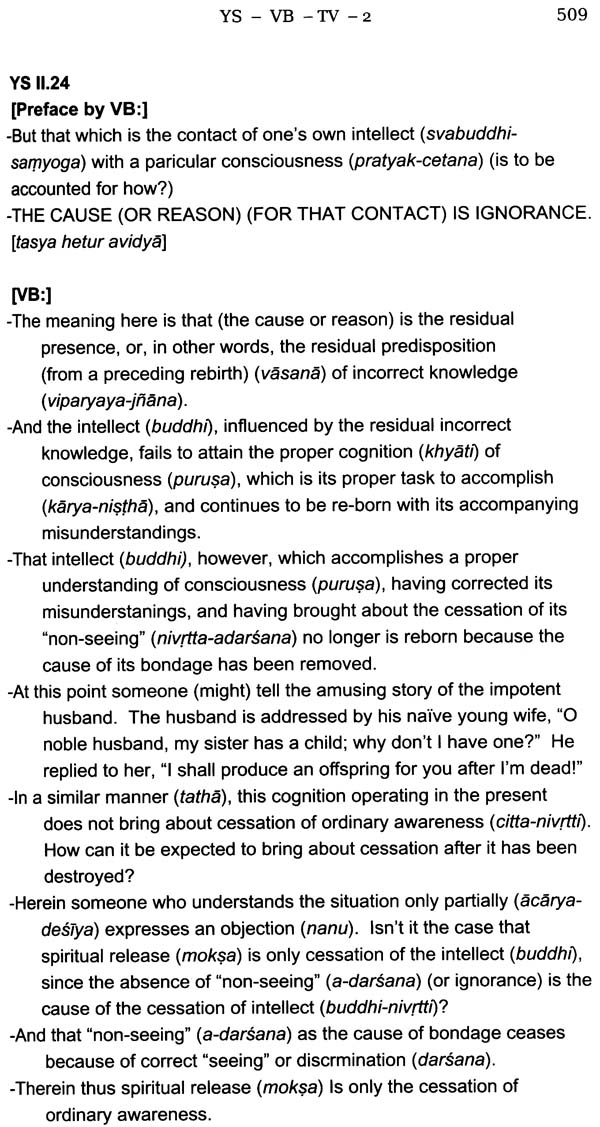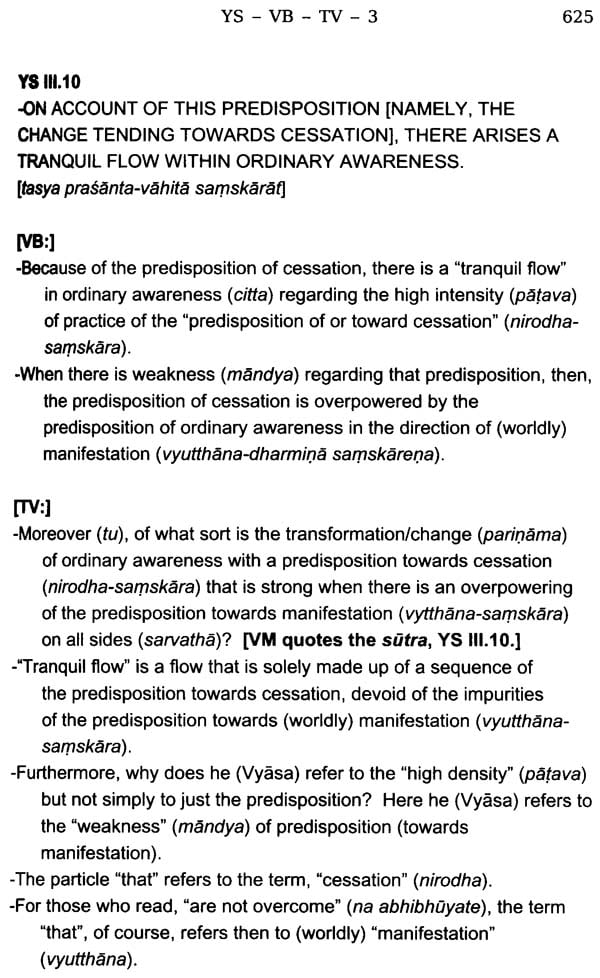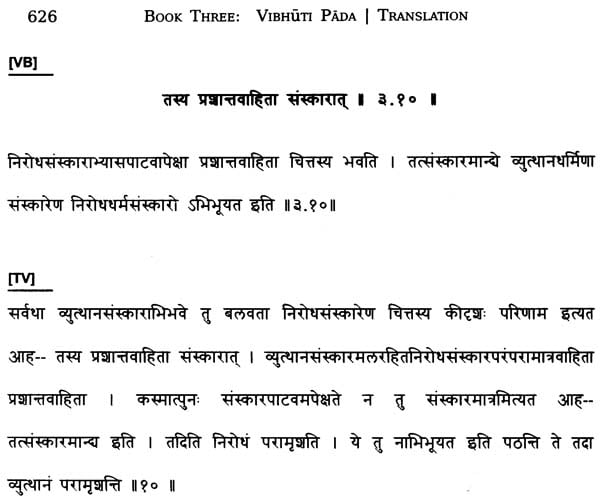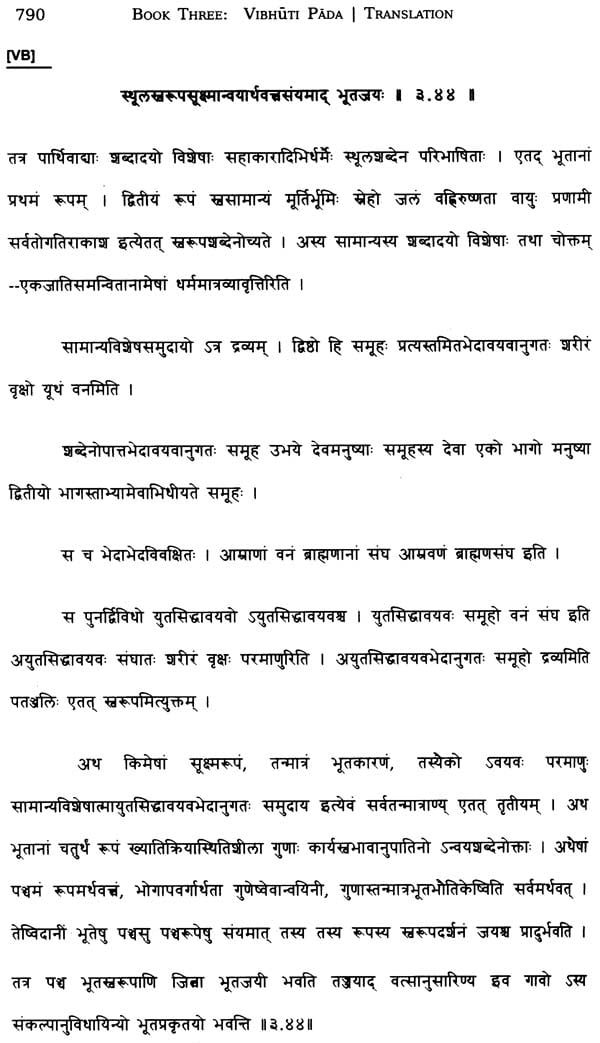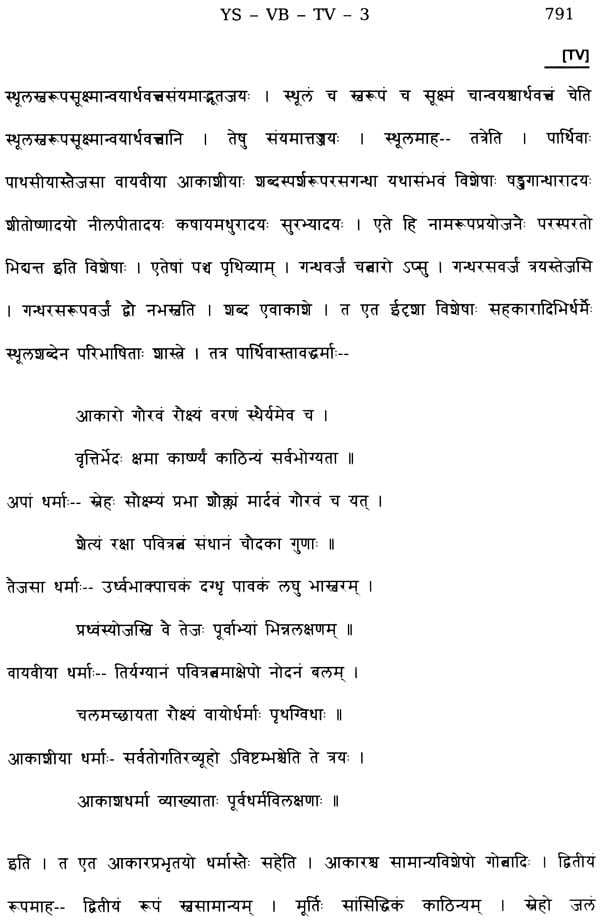
Classical Yoga Philosophy and the Legacy of Samkhya
Book Specification
| Item Code: | NAR435 |
| Author: | Gerald James Larson |
| Publisher: | Motilal Banarsidass |
| Language: | Sanskrit Text With English Translation |
| Edition: | 2018 |
| ISBN: | 9788120842014 |
| Pages: | 1037 |
| Cover: | HARDCOVER |
| Other Details | 9.50 X 6.50 inch |
| Weight | 1.50 kg |
Book Description
It was in the summer of 1964 when I had completed my first year in the doctoral program at Columbia University, New York City, the same year in which I had also completed my first full year of the study of classical Sanskrit, that an opportunity arose to do a summer reading course with a visiting professor of Sanskrit from India. He was only to be in the city for the summer, and a course in Sanskrit reading was hastily set up to accommodate his brief visit. One other doctoral student and I were available to take that brief reading course, and we decided to read a reasonably short Sanskrit text, namely, the Samkhyakarika of Isvarakrsna. It was a welcome change from the tedium of Lanman's Sanskrit Reader (Nala, Hitopedesa, Kathasaritsagara, and so forth), an opportunity for the first time to read a philosophical text, the sort of reading that had persuaded me to undertake the study of classical Sanskrit in the first place.
I was enrolled in the joint Ph.D. program in the study of religion at Union Theological Seminary and Columbia University, and my interests were primarily in philosophy of religion and the history of religions. I had studied Heidegger's Being and Time and Jean-Paul Sartre's Being and Nothingness (with John Macquarrie at Union Theological Seminary) and the general history of philosophy (with John Herman Randall at Columbia University). I had also begun serious reading in the intellectual history of India, including the principal Upanisads, the Bhagavadgita, the commentaries of the great Advaitin, Sankara, Nyaya logic, early Buddhist philosophizing, the work of Nagarjuna and Vasubandhu, and, of course, the various Vedantas. I was also reading the standard secondary work commonly studied at that time, that is, the work of Paul Deussen, Erich Frauwallner, T. R. V. Murti, A. C. Mukerji, J. N. Mohanty, B. K. Matilal, et al.
As we read the Samkhyakarika that summer, I recall two vivid intellectual reactions. First, here was a philosophy of India dramatically different from the other traditions of Indian philosophy, an eccentric dualist ontology (not unlike the eccentric dualist ontology I had recently encountered in the work of Jean-Paul Sartre) that affirmed the productive reality of the natural, material world along with a notion of self (and/or consciousness) as a pluralistic presence that was the antithesis of any sort of cosmic absolute (whether as Brahman, Atman, God, Emptiness, or whatever). Second, here also was a philosophy that had stimulated considerable intellectual interest among scholars in the early modern historiography of the field of Indology (both Indian and European) (in the work, for example, of R. Garbe, H. Oldenberg, Th. Stcherbatsky, A. B. Keith, S. N. Dasgupta, et al.) but was for the most part dismissed as a serious intellectual position, largely, it seemed to me, because of the negative critique of the Samkhya philosophy in Sarikara's famous Brahmasutrabhasya, a critique that as far as I could tell, as a young scholar, had been uncritically cited by almost all interpreters but had never been properly critiqued itself. In other words, I had the sense that Sankara's critique had come to be a standard "hit" piece vis-a-vis Samkhya philosophy, not unlike what Hegel did in the nineteenth century to Indian philosophy in general. As Halbfass has commented regarding Hegel's influential critique of Indian philosophy:
... Hegel's negative statements on India and the Orient in general, and his pronouncement that "real philosophy" begins only in Greece, found wide acceptance, and they were taken as a justification to dismiss Indian thought entirely from the historiography of philosophy, or to relegate it to a preliminary stage.
It appeared to me that both critiques, that of Sankara and Hegel, mutatis mutandis, were motivated to a significant degree by a perceived need to come down hard on philosophical views that could possibly prove to be important rivals to their own positions. In the case of Hegel, Indian philosophy, according to Hegel, was insufficiently grounded in historical consciousness and thus hopelessly limited to vacuous abstractions in a "night in which ... all cows are black.? In the case of Sarikara, the Samkhya assertions of the reality of the natural, material world (pradhana) and the pluralization of consciousness (pursa-bahutva) radically called into question the fundamental intuitions upon which the Advaita position was dependent, according to the revelations as found in the mahavakyas of sruti. More to the point, both critiques in their respective historical contexts were remarkably influential in undercutting much if not all of subsequent philosophical hermeneutical interest, not only of Samkhya in the context of Indian thought, but of Indian philosophy generally in the context of modern western philosophy. It was perhaps a ripe time, in my view, to reconsider these older views in traditional Indian philosophy and in modern western thought, both historically and philosophically.
Willy-nilly, those two vivid reactions to my first reading of the Samkhyakarika inclined me on a research trajectory, first, for my doctoral dissertation at Columbia in 1967; second, to the revision of that thesis into my first book, Classical Samkhya: An Interpretation of its History and Meaning in 1969 (and the second revised edition in 1979, reprinted most recently in 2014); third, to years of working together with a distinguished pandit in India, Dr. Ram Shankar Bhattcharya, co-editing with him, in 1987, Samkhya: A Dualist Tradition in Indian Philosophy, and eventually, in 2011, Yoga: India's Philosophy of Meditation, respectively volumes IV and XII of the Encyclopedia of Indian Philosophies, under the general editorship of Karl H. Potter. Apart from long introductory essays, the encyclopedia volumes include summaries of the contents of all Sanskrit published texts on Samkhya and Yoga that we could find from ancient times to the twentieth century.
In the Epilogue to the first edition of my Classical Semkhya, I attempted to compare and contrast the eccentric Samkhya dualism of purusa and prakrti with the equally eccentric but strikingly similar dualist ontology (the pour-soi and en-sol) of Jean-Paul Sartre in the hope of showing the salient difference of the Samkhya dualism (as well as the Sartrian dualism) from the garden-variety Cartesian dualism of western thought as well as the standard dualistic versions of the Vedanttic philosophies in India. In the Epilogue to the second edition of my Classical Samkhya in 1979, I attempted to offer what I think is the first serious critique of Sarikara's critique of the Samkhya philosophy, highlighting the manner in which Sarikara clearly misunderstood the nature of the Samkhya dualism and thereby set in motion a misunderstanding of the Samkhya philosophy, which continues even now in some contemporary accounts of Samkhya. In the two introductory essays to the encyclopedia volumes mentioned above, I have tried to argue that classical Samkhya philosophy is a creative and original tradition of philosophical reflection, and far from 'being a curious piece of cosmological speculation, is in many ways one of the truly important intellectual achievements in India's history.
The purpose of this book is to present a systematic discussion of the philosophy of classical Yoga as an interpretation and further elucidation of the philosophy of classical Samkhya, based upon new translations into English of the three most important texts of philosophical Yoga, namely, the Yoga-sotra-s, attributed to a certain Patanjali and usually called the Patanjala-yoga-sotra or Patanjala-yoga- sastra(hereafter simply YS) (ca. CE 350-450); its basic commentary (the Bhasya) attributed to the legendary Veda vyasa (hereafter the VB) (likewise ca. CE 350-450); and a long sub-commentary called a tika (or Vyakhya) entitled Iettvavaisaradi (" A Skilled Clarification of the Truth") (of Yoga) (hereafter TV) composed by the well known scholar of Indian philosophy, Vacaspatimisra (hereafter VM) (ca. CE 950). The total complex of the translation includes the four sections (or Pada-s) of the YS, inclusive of the "Samadhi Pada," "the concentration section" (with 51 sotra-s), the "Sadhana Pada," "the meditative practice section" (with 55 sotra-s), the "Vibhuti Pada," "the extraordinary cognitive states section" (with 55 sotra-s) and "Kaivalya Pada,' "the spiritual freedom section" (with 34 sutra-s). The sutra-s, taken together alone (without commentary), or what is known as the "sutrapatha,: number 195. Taken together by themselves in this manner, the sutra-s are for the most part nearly impossible to understand, making clear that there has probably been a long tradition of oral interpretation, traceable through a series of traditional teachers (guru-parampara). Written commentaries in the case of the YS probably began already with the Bh8$ya attributed to the legendary Vedavyasa (or the VB). In this regard, the laconic nature of the VB almost appears at times to be a set of scholarly notations, suggesting perhaps that the VB is what is known as a "self-composed" (svopajna) commentary. The Tika (or Vyakhya) of Vacaspatimisra, on the other hand, is a much more elaborate and dense discussion of the sutrapatha and the VB. Even with both commentaries, moreover, the full significance of the Patanjala-yoqa-sutra-s (YS) remains elusive. The dates for all three texts are only approximate as is often the case for Sanskrit philosophical texts in the early centuries, especially for the YS and VB, which could easily be plausibly dated in a wider range of ca. CE 200-600.
I have used the so-called "vulgate" editions of these texts, since these editions are the only complete texts currently available for all four sections or Pada-s of the YS, the VB and the TV. I have nevertheless also had the benefit of utilizing a new critical edition of a small portion section I (or Pada I) (the Samadhi Pada) of the VB in the recent work of Philipp Andre Maas in his edition, samadhipada: The First Chapter of the Patanlja/ayogasastra for the First Time Critically Edited? Maas also includes in Appendix I, in collaboration with Kengo Harimoto, a possible reconstruction of the text of Pada I (the Samadhi Pada) of the Patanjala-yoga-sastra-vivarana (hereafter PYSV), ascribed, though with some considerable controversy, to the well-known Advaita Vedanta philosopher, Sankara.
Date and authorship of the PYSV remain problematic, but it may well turn out to be an older commentary on the YS, according to Maas. Although Maas's work is only, thus far, a critical edition of the first section of the YS and the VB (and not inclusive of the TV), it involves an exhaustive catalogue of the manuscripts and printed editions of the various relevant texts along with detailed variant readings. Maas is skeptical about determining an original version of the YS and VB because of a long history of errors in the transmission of manuscripts; he is, nevertheless, able to identify both a "Northern group" and a "Southern group" of texts in transmission." Maas designates the "Northern group" as the basis for what he calls a "normative recession" or "vulgate" edition, widely used throughout lndia." The "Southern group," to which Maas assigns the PYSV, is possibly older and may well represent an older version of the VB. These conclusions await, of course, completion of the critical edition of all four sections of the VB and resolution of the issues of date and authorship of the PYSV. The shortcoming of Maas's work, in my view, is that he does not proceed to translate or critically to analyze his proposed critical text for Pada I, nor does he address the philosophical content of what he studies. He is solely interested in the philological study of the ancient manuscripts (and see Larson, 2009: 487-98). In the interim, of course, a new English translation of the TV will have to be based on one or the other 'vulgate' editions, and I have chosen to use the edition in the Anandasrama series (and see note 1), which is generally recognized as the most widely used printed edition in philosophical discussions of Yoga.
The Vyasa Bhasya (VB) on the YS is identified in many if not all colophons of its manuscripts and in most published editions as an "explanation of Samkhya" (samkhya-pravacana), and, therefore, early classical Yoga philosophy is usually considered in published editions to be a later articulation and extension of classical Samkhya philosophy." The two traditions of Samkhya and Yoga, thus, are usually characterized as a "common tradition" (samana-tantra) in the intellectual history of India. There are, however, important differences between Samkhya and Yoga, but, as will be argued in this work, they clearly represent a single philosophical heritage and cannot be properly understood apart from each other.
The one hundred and ninety-five sutra-s (or 'mnemonic aphorisms') of the YS and the Bhasya (VB) in four sections (Pada-s) have been translated many times in English and other European, Asian and Indian vernacular languages, but the long Tika of VM (together with the YS and VB) has had only two complete English translations, that is, the rendering of James Haughton Woods in The Yoga-System of Patanjali (Volume Seventeen of the Harvard Oriental Series, 1914) and the rendering of Rama Prasada in Patanjali's Yoga Sutras (Volume Four, The Sacred Books of the Hindus, 1910), and neither with the full Sanskrit of Vacaspatimisra's text." Both translations, though ground breaking in their time and still well worth consulting, are nevertheless over a century old and in need of updating, especially the TV of VM because of its historical importance in the tradition.
The TV of VM needs updating, first of all, if for no other reason than that there has been new philological and philosophical work since the early twentieth century that needs to be taken into account. The J. H. Woods translation, to cite just one obvious example, hardly mentions the Samkhya intellectual background that is essential for understanding Yoga, and, thus, fails to provide a rounded picture of the full Yoga system. Second, since it is a much fuller explication of the meaning of the YS and the VB, VM's TV will become clearer when the technical terminology in the text is revised from the older English of a century ago into a more contemporary and systematic English usage. Although the VB is an essential text on the YS, frequently, as mentioned just above, it gives the impression of being primarily laconic notations that call for much more elaborate treatment. VM's TV fills in many of the gaps in a way that appears to be faithful for the most part to the VB's original intent, although admittedly much continues to be opaque. An updated English rendering of that elaboration will hopefully allow VM's text to become more easily accessible to modern readers. Third, VM's commentarial work, not only on classical Yoga but also on the classical Samkhya, has been profoundly influential in subsequent Sanskrit commentary work." VM's TV has been the main influence on almost all commentary work on Yoga after the tenth century CE, for example, the Maniprabha of Ramananda Sarasvati, the Yogavarttika of Vijnanabhikshu, and many other works, in the medieval and/or pre-modern period. Likewise his commentary work on Samkhya, entitled the Tattvakaumudi (“Moonlight on the truth”)(of Samkhya”(the Samkhyakarika)(ca.CE350-450(,has been the basis for almost all of the commentaries on Samkhya from the tenth century down to the present day. Even the eleventh century commentary of Bhoja, the Rajamartanda, which claims to be an independent work apart from earlier commentaries, is, in fact, dependent throughout on the VB and TV.
**Contents and Sample Pages**
